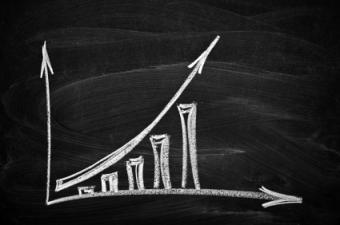The nation's economy grew at an annual rate of 2.5 percent in the second quarter, the ""Bureau of Economic Analysis"":http://www.bea.gov/newsreleases/national/gdp/2013/pdf/gdp2q13_3rd.pdf (BEA) revealed Thursday.
[IMAGE]Economists had expected the report--the third in the series of monthly GDP reports by the BEA--to show the economy had grown at a 2.8 percent annual rate, which would have been faster than the 2.5 percent growth rate BEA reported a month ago.
The report--coming four days before the end of the third quarter--is more of a statistical footnote than market-moving news. Still, the 2.5 percent annualized growth rate means the economy grew at its fastest pace since the third quarter last year. GDP grew 1.1 percent in the first quarter and 0.1 percent in the fourth quarter of 2012.
Nonetheless, it suggested some of the fears that the federal budget cuts known as sequester would severely damage the economy had not materialized. The sequester cuts took effect March 1, the last month of the first quarter. With a full quarter's effect of sequester growth moved closer to 3.0 percent, which is considered the trend rate of growth. Since 1930, growth has averaged 3.4 percent.
In the same report, BEA said corporate profits rose 3.3 percent in the second quarter--slightly slower the 3.9 percent second quarter growth reported last month. Corporate profits fell 1.3 percent in the first quarter.
According to the report, resident fixed investment contributed 14.2 percent to growth, up from the 12.9 percent contribution reported in the second GDP estimate a month ago. Residential fixed investment was $487.1 [COLUMN_BREAK]
billion in the second quarter, up from $485.7 billion in the report last month and $471.2 billion in the first quarter.
Non-residential fixed investment was revised upward as well, to $2.458 trillion from $2.455 trillion a month ago and $2.420 trillion a month ago.
The change in GDP largely reflected a positive contribution from trade. In the initial report issued in July--which relied on incomplete data and estimates--net exports (exports minus imports) subtracted about $15 billion from the nation's economy. In the revised report, net exports added $17 billion as exports exceeded imports.
Government spending at all levels was reported at $2.904 trillion--revised up from $2.900 trillion--or 18.5 percent of second quarter GDP, down from 18.7 percent in the first quarter. Federal spending fell slightly to 7.45 percent in the second quarter from 7.52 percent in the first.
Federal spending in the second quarter was $3.4 billion below the first quarter. The quarterly reduction in federal spending was the ninth in the last three years.
GDP is the sum of personal consumption expenditures, investment spending, government outlays, and net exports. The ""formula"" for GDP is generally expressed as C (consumer spending) plus I (investment) plus G (government) minus X (net exports). If exports exceed imports, the ""X"" in the formula is positive; if imports exceed exports, it is a negative.
The improvement in profits came largely in the non-financial sector, where second-quarter profits rose $37.8 billion after falling $3.1 billion in the first quarter. In the financial sector, second-quarter profits were up $24.5 billion after falling $4.1 billion in the first.
The price index for gross domestic purchases, which measures prices paid by U.S. residents, increased 0.2 percent in the second quarter, 0.1 percentage points less than the report a month ago; this index increased 1.2 percent in the first quarter. Excluding food and energy prices, the price index for gross domestic purchases increased 0.8 percent in the second quarter compared with an increase of 1.4 percent in the first.
_Hear Mark Lieberman next Friday on P.O.T.U.S. radio, Sirius-XM 124, at 8:45 a.m. and 12:30 p.m. Eastern and following him on Twitter at @foxeconomics._

 theMReport.com Your trusted source for mortgage banking news
theMReport.com Your trusted source for mortgage banking news









